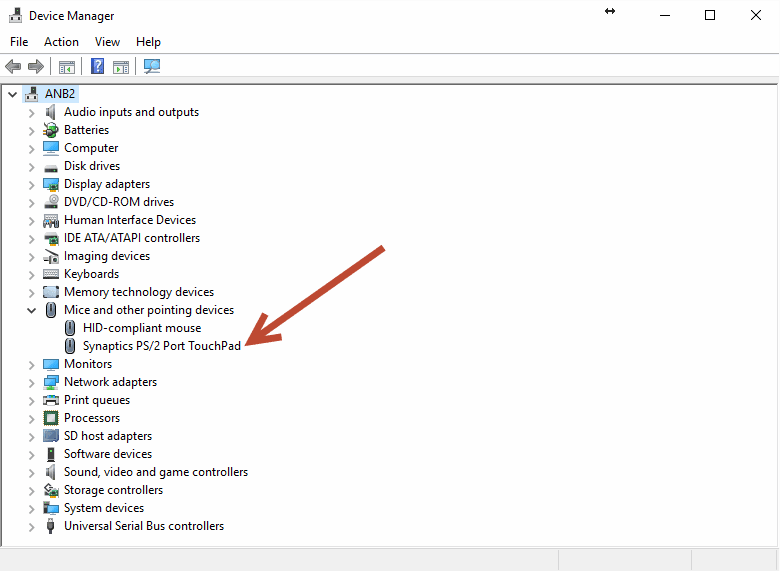- Synaptics Pointing Device Driver Windows 10
- Drivers Synaptics Input Devices Software
- Engineering Exceptional Experiences | Synaptics
- Install Synaptics Pointing Device Driver
- Drivers Synaptics Input Devices List
Download input device drivers or install DriverPack Solution software for driver scan and update. Input device drivers. Jan 29, 2019 The Synaptics device driver is customized to meet the specific requirements of your device manufacturer. To ensure that you get the appropriate device driver for your system, download your. Confirm the Synaptics driver is 19.5.35.41 (or later). Synaptics Touchpad in Device Manager. Procedure 2: If the driver version is not the latest, go to HP Customer Support - Products. Enter your HP computer product name and model number. Select Software and Driver Downloads. Expand Driver-Keyboard, Mouse and Input Devices. The gpm driver and the X driver both try to read data from the touchpad, and if they try to read at the same time, both drivers see incomplete data and don't know how to interpret it. If you are running a 2.6.x kernel though, there should be no conflict, because the kernel driver will make sure both user space drivers receive all events from. Synaptics' HMI solutions are designed into a range of Automotive, Mobile, PC and Smart Home applications. Advancing Touch Technology for Flexible Emissive Displays On‐cell architecture improves optical and mechanical performance for flexible OLED displays used in mobile devices but it poses major technical hurdles.
synaptics is the open source input driver for Synaptics and ALPS touchpads.
Installation
Kernel
You need to activate the following kernel options:
You may also need additional drivers under the Mice menu to support your touchpad. i.e. 'Synaptics PS/2 mouse protocol extension'. The touchpad may also be USB, not PS/2. If you are unsure, select multiple drivers and check what the kernel uses later with 'lspci -k'.
Driver
After setting the INPUT_DEVICES variable remember to update the system using the following command so the changes take effect:
Configuration
The driver has a lot options to tune it to your needs. See the synapticsman page for more information.
Fixed configuration
Referring to xorg.conf there should have a /etc/X11/xorg.conf.d directory on the system. If there is none create one:
Configure file /etc/X11/xorg.conf.d/50-synaptics.conf as in the example below:
/etc/X11/xorg.conf.d/50-synaptics.confConfiguration at runtime
You need to enable above option to be able to configure the driver also at runtime. Changes at runtime will be lost with the next start of the X-server. To keep them, add them to the above config file.
You can configure the driver with the program synclient. Some examples:

List all parameters:
Cut the right side of the touch area to expand the vertical scroll area:
Finding the right edge parameter:
Disable the mouse click function:
Finally, You can dump Your handpicked configuration to the 99-synaptics file pasting output of the following command inside the InputClass section:
user $synclient -l | sed -e '1d' -e 's/^ +/Optiont'/g' -e 's/ += /'t'/g' -e 's/$/'/g'Alternatively there is the KDE systemsettings module kde-misc/synaptiks:
Troubleshooting
My Touchpad is not recognized
If your touchpad does not show in either lsusb nor lspci, that might be due to your PS/2 controller and how it is handled by the kernel[1]. One indication is if
returns something along the lines of
That AUX port is where the touchpad is connected[2].Try adding the following to your kernel command line, e.g. in /etc/default/grub:
/etc/default/grubNow, you should update your grub.cfg:
If, after rebooting with these parameters, you get a generic Logitech PS/2 mouse input device, you may need to add the appropriate PS/2 extension driver to your Kernel config:
After rebooting, your touchpad should be recognized correctly.
See also
- libinput - A drop-in replacement for the 'slowly deprecating evdev and synaptics input drivers'.
References

- ↑Trackpad on Acer laptop not working
- ↑Explanation on PS/2 Controllers
Microsoft has partially addressed known issues impacting Windows 10 devices with certain Conexant or Synaptics audio devices after investigating ongoing errors since May 2020.
Microsoft has also removed some of the safeguard holds blocking the affected systems from upgrading to the latest Windows 10 version.
Issue resolved for two out of four safeguard holds
The known issue impacting computers with Conexant audio drivers has been under investigation since May 2020 when Microsoft released Windows 10, version 2004.
Synaptics Pointing Device Driver Windows 10
Redmond has resolved the issue for safeguard IDs 25702662 and 25702673 as of December 11, 2020.
'Please note, if there are no other safeguards that affect your device, it can take up to 48 hours before the update to Windows 10, version 2004 or Windows 10, version 20H2 is offered,' Microsoft says on the issue's Windows Health Dashboard entry.
'We recommend that you do not attempt to manually update using the Update now button or the Media Creation Tool until this issue has been resolved.'
While Microsoft does not recommend circumventing safeguard holds, you can still do that using the Media Creation Tool or a newly included Windows 10 group policy specifically designed to enable users to bypass update blocks.
To work around Windows 10 update installation issues, users are advised to use this update problem troubleshooter or this guided walk-through.
Problems and errors impacting Windows 10 devices under safeguard IDs 25702617 and 25702660 are still under investigation.
Drivers Synaptics Input Devices Software
Known issue causes BSOD crashes
'Windows 10 devices with affected Conexant or Synaptics audio drivers might receive a stop error with a blue screen during or after updating to Windows 10, version 2004,' Microsoft explains.
Engineering Exceptional Experiences | Synaptics
'The affected driver will be named Conexant HDAudio Driver under Sound, video and game controllers in Device Manager and have versions 8.65.47.53, 8.65.56.51, or 8.66.0.0 through 8.66.89.00 for chdrt64.sys or chdrt32.sys.'
Impacted computers with Conexant or Synaptics audio devices will not be able to install newer Windows 10 versions until the associated compatibility holds will be removed.
Install Synaptics Pointing Device Driver
Windows 10 devices affected by this issue include both client (Windows 10 2004 and 20H2) and server (Windows Server 2004 and 20H2) platforms.
Drivers Synaptics Input Devices List
Related Articles:

